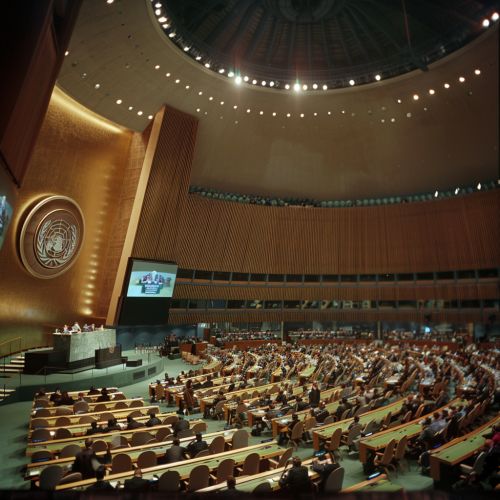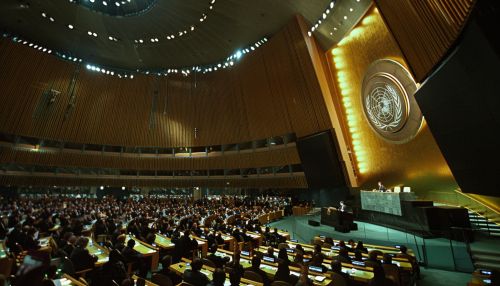Genocide Convention
Introduction
The Genocide Convention, formally known as the Convention on the Prevention and Punishment of the Crime of Genocide, is a multilateral treaty adopted by the United Nations General Assembly on December 9, 1948. The Convention entered into force on January 12, 1951, and has since become a cornerstone of international law aimed at preventing and punishing acts of genocide. This comprehensive article delves into the historical context, legal framework, implementation, and impact of the Genocide Convention.
Historical Context
The concept of genocide was first articulated by Raphael Lemkin, a Polish-Jewish lawyer, in his 1944 book "Axis Rule in Occupied Europe." Lemkin coined the term "genocide" by combining the Greek word "genos" (race or tribe) with the Latin word "cide" (killing). The horrors of the Holocaust during World War II galvanized the international community to address the crime of genocide, leading to the drafting and adoption of the Genocide Convention.
Pre-World War II Atrocities
Before the Holocaust, there were several instances of mass atrocities that would later be recognized as genocides. These include the Armenian Genocide during World War I and the mass killings of the Herero and Namaqua people in German South West Africa. However, these events did not lead to immediate international legal action.
Post-World War II Developments
The Nuremberg Trials, which prosecuted key Nazi leaders for war crimes and crimes against humanity, highlighted the need for a specific legal framework to address genocide. The trials, however, did not prosecute genocide as a distinct crime, which underscored the necessity of a dedicated international treaty.
Legal Framework
The Genocide Convention defines genocide in Article II as any of the following acts committed with intent to destroy, in whole or in part, a national, ethnical, racial, or religious group:
- Killing members of the group;
- Causing serious bodily or mental harm to members of the group;
- Deliberately inflicting on the group conditions of life calculated to bring about its physical destruction in whole or in part;
- Imposing measures intended to prevent births within the group;
- Forcibly transferring children of the group to another group.
Obligations of State Parties
Under Article I of the Convention, state parties are obligated to prevent and punish the crime of genocide. This includes enacting necessary legislation and ensuring that perpetrators, whether they are constitutionally responsible rulers, public officials, or private individuals, are punished.
Jurisdiction and Enforcement
Article VI of the Convention stipulates that persons charged with genocide shall be tried by a competent tribunal of the state in which the act was committed or by an international penal tribunal. The establishment of the International Criminal Court (ICC) in 2002 has provided a permanent institution for prosecuting individuals for genocide.


Implementation and Challenges
The implementation of the Genocide Convention has faced numerous challenges, including issues of state sovereignty, political will, and the complexities of proving genocidal intent.
Case Studies
Several notable cases have tested the application of the Genocide Convention:
- The International Criminal Tribunal for Rwanda (ICTR) prosecuted key figures responsible for the 1994 Rwandan Genocide.
- The International Criminal Tribunal for the former Yugoslavia (ICTY) addressed genocidal acts committed during the Bosnian War, including the Srebrenica massacre.
- The ICC has ongoing investigations and prosecutions related to alleged genocides in Darfur, Sudan, and Myanmar.
Political and Legal Obstacles
Despite these efforts, political considerations often hinder the timely and effective application of the Genocide Convention. States may be reluctant to label atrocities as genocide due to diplomatic and strategic interests. Additionally, the requirement to prove "intent to destroy" a group poses significant evidentiary challenges.
Impact and Legacy
The Genocide Convention has had a profound impact on international law and human rights. It has established a legal and moral framework for addressing one of the most heinous crimes known to humanity.
Influence on International Law
The principles enshrined in the Genocide Convention have influenced the development of international criminal law, including the statutes of the ICTY, ICTR, and ICC. The Convention has also inspired regional human rights instruments and national legislation aimed at preventing and punishing genocide.
Ongoing Relevance
The Genocide Convention remains relevant in contemporary international relations. Ongoing conflicts and reports of mass atrocities in various parts of the world underscore the need for vigilance and robust mechanisms to prevent and respond to genocide.
See Also
References
- Schabas, William A. "Genocide in International Law: The Crime of Crimes." Cambridge University Press, 2009.
- Power, Samantha. "A Problem from Hell: America and the Age of Genocide." Basic Books, 2002.
- Lemkin, Raphael. "Axis Rule in Occupied Europe: Laws of Occupation, Analysis of Government, Proposals for Redress." Carnegie Endowment for International Peace, 1944.
